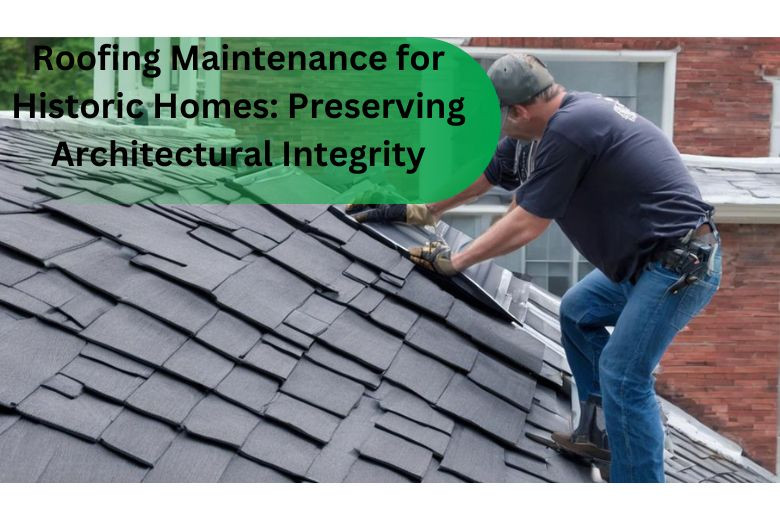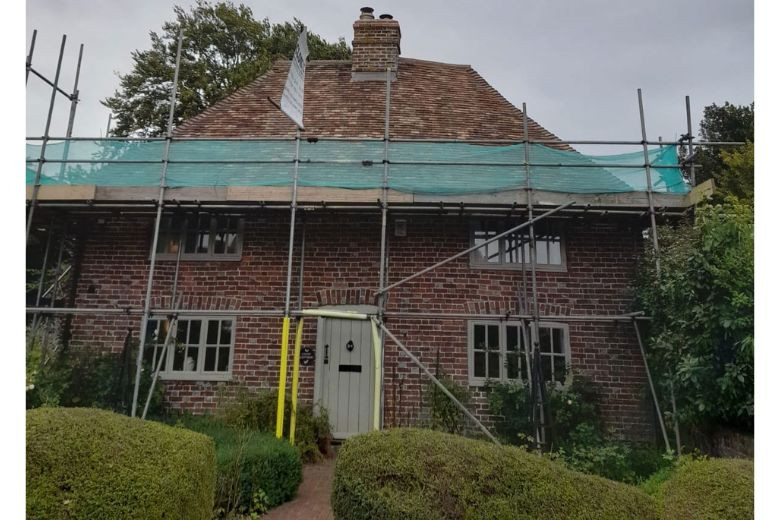Roofing Maintenance for Historic Homes: Preserving Architectural Integrity
Posted on October 01, 2024 by Admin

Roofing is just one part of the attention needed in maintaining a special charm and character in historic homes. Maintenance of roofing in such houses is more than an issue of functional importance because it ensures architectural integrity, and timeless structures are taken care of to stand in perpetuity as a testament to history. Below is how to do roofing maintenance for historic homes and keep the architectural beauty of your historic home.
Understanding Special Needs of Historic Roofs
Historic homes often have complex roof designs and are made with materials that are no longer common. Slate, clay tiles, wood shingles, and metal roofs were typical in most historic homes. The need to understand their special requirements forms the basis for effective roofing maintenance for historic homes.
1. Regular Inspections
Perhaps the most important part of maintaining an old house's roof is regular inspection. Professional examinations should be scheduled at least twice a year and also after major weather events. This way, early indications of problems will be shown, such as missing or damaged shingles, leaks, and signs of wear and tear.
2. Gentle Cleaning Techniques
Roof cleaning for any historic house is fairly fragile. Use a gentle brush and a mild cleaning solution to eliminate moss, algae, and dirt. Avoid high-pressure washing, which can only dislodge shingles and injure the roofing material used in the building.
3. Repair with Authentic Materials
In incidences of repairs, the material should be as close to the original as possible. It is not only for the aesthetics but for historical truth. Finding either authentic or reproduced material can be time-consuming but one of the most important tasks when it comes to roof maintenance in historic homes.

4. Structural Issues Should be Dealt With in Time
Age can bring with it structural issues with historic homes. Watch out for sags, rotten wood, or weakened supports; these are conditions that need to be responded to immediately. In relation to the integrity of the structure, ventilation is very important, when it comes to the proper maintenance of historic home roofing.
5. Maintaining Proper Ventilation
Proper ventilation is key for all roofs, but it is more critical in historic homes. Proper ventilation prevents moisture buildup, which can lead to mold and rot and other deteriorations on the roofing material. You want to make sure you have enough ventilation within your attic space or your roof space to maximize the life of your roof.
6. Protection Against Water Damage
Water damage is one of the most frequent problems found in older residential buildings. Verify that there are no leaks and that gutters and downspouts are not blocked. All these items are vital to the maintenance of the roof and foundation of a historic house since water should never rest on either.
7. Seeking Assistance from Preservation Professionals
When in doubt, consult with preservation experts or historic preservation societies. These professionals can give you helpful advice specific to your historic home. Their expertise will guide you to make intelligent decisions about maintaining your historic home's roofing.
Conclusion
Roof maintenance on historic homes goes more in line with preserving history than keeping the weather out. Regular inspections, soft cleaning methods, true repairs, and proper ventilation all preserve the integrity of these architectural treasures. Addressing structural issues and protection from water damage are other areas embraced within such a maintenance program.By following these guidelines, you can guarantee that your historic home continues to be a beautiful, staunch, and living history. Remember, however, that when it comes to taking care of the roofing in historic houses, you are not working on just the roof; it is therefore responsible for the conservation of the general historical and architectural integrity of your home. That being said, you can enjoy the ageless splendor and the hand of history at home, noticing it only in reflection over many years to come.
Also Read :
The Importance of Proper Attic Ventilation for Roof Health
How to Identify and Prevent Roof Mold and Mildew
The Best Practices for Removing Snow from Your Roof
The Role of Roof Decking in Structural Integrity
The Benefits of Cool Roofs in Hot Climates
How to Install a Tankless Water Heater: Pros and Cons
The Benefits of a Home Plumbing Maintenance Plan
Roof Safety Tips for Homeowners
The Impact of Algae and Moss on Your Roof
How to Deal with Roof Leaks During a Storm
How to Create an Electrical Maintenance Plan for Your Home
Faqs
-
1. Why is regular inspection important for historic home roofs?
The regular inspection of the roofs of historic homes should be conducted for early signs of damage, such as missing shingles or possibly roof leaks. For historic homes, inspection can help in preserving the architectural integrity of the structure and stop the spread of extensive damage.
-
2. What do experts recommend for cleaning a historic roof without damage?
Soft brushes and mild cleaning solutions clean without risk of damage. Avoid high-pressure washing, which can dislodge shingles and damage delicate materials. Proper cleaning maintains the condition and appearance of the roof.
-
3. What materials should be used to repair historic roofs?
Materials used in the repairs should approximate the original material as much as possible to maintain historic accuracy. Authentic or reproduction materials guarantee a seamless blend of repair and original roof, thereby protecting the aesthetic and value of your home.
-
4. How do I stop water damage on a historic roof?
Prevent water damage through frequent leak checking, keeping gutters and downspouts clear of debris and functioning properly, and by maintaining good roof drainage. It's also important to help keep the roof and foundation dry to prevent long-term damage.
-
5. Is it necessary to hire a professional when it comes to historic roof maintenance?
Yes, it is advisable to consult with preservation experts or historic preservation societies. These professionals can offer individually tailored advice and solutions for the preservation of unique features of historic roofs in order to guarantee the accuracy and effectiveness of the preservation effort.
Recent Post
- Top Plumbing Service Providers in Arizona, USA
- Top 10 Electrician Service Providers in Alabama, USA
- Top 20 Roof Repair Service Providers in Alabama, USA
- The Role of Roof Insulation in Energy Efficiency: Tips and Tricks
- Understanding Roof Damage from Wildlife and How to Prevent It
- How to Choose the Best Roofing Contractor for Emergency Repairs
- Roofing Maintenance for Historic Homes: Preserving Architectural Integrity
- The Importance of Proper Attic Ventilation for Roof Health
- How to Identify and Prevent Roof Mold and Mildew
- The Best Practices for Removing Snow from Your Roof